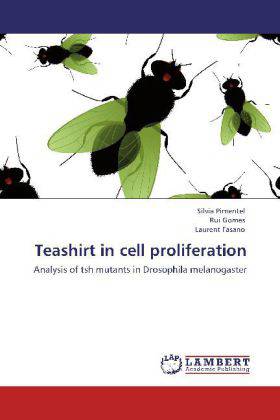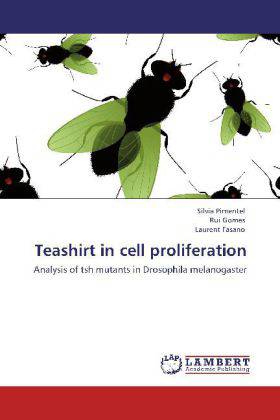
Je cadeautjes zeker op tijd in huis hebben voor de feestdagen? Kom langs in onze winkels en vind het perfecte geschenk!
- Afhalen na 1 uur in een winkel met voorraad
- Gratis thuislevering in België vanaf € 30
- Ruim aanbod met 7 miljoen producten
Je cadeautjes zeker op tijd in huis hebben voor de feestdagen? Kom langs in onze winkels en vind het perfecte geschenk!
- Afhalen na 1 uur in een winkel met voorraad
- Gratis thuislevering in België vanaf € 30
- Ruim aanbod met 7 miljoen producten
Zoeken
Teashirt in cell proliferation
Analysis of tsh mutants in Drosophila melanogaster
Silvia Pimentel, Rui Gomes, Laurent Fasano
Paperback | Engels
€ 89,45
+ 178 punten
Omschrijving
Here we present evidence that the transcription factor Teashirt (Tsh) has a role in cell proliferation in Drosophila follicle stem cells (FSC), neuroblasts and S2 cells. In ovaries, Tsh and Hedgehog (Hh) are co-expressed in the terminal filament and cap cells. The characterisation of a new tsh mutation causing female sterility allowed us to show that Tsh acts via Hh-mediated signalling pathway to control FSC proliferation. In this tsh background, the hsGal4 driven expression of tsh or hh partially rescues the abnormal phenotype allowing oogenesis progression. Furthermore, tsh overexpression mimics the hh overexpression associated phenotype. In neuroblasts, mutant tsh alleles are unable to exit mitosis. The phenotypes of double mutants with rod or bub1 resemble the tsh single mutant phenotype, suggesting failure to escape mitosis. Finally, tsh depletion in S2 cells mimics the tsh mutant phenotype in neuroblasts. We propose that during oogenesis, tsh affects FSC proliferation mediating Hh expression. In neuroblasts, tsh may also acts through Hh signalling, since expression of interference hedgehog, was severely downregulated in our DNA microarray analysis.
Specificaties
Betrokkenen
- Auteur(s):
- Uitgeverij:
Inhoud
- Aantal bladzijden:
- 200
- Taal:
- Engels
Eigenschappen
- Productcode (EAN):
- 9783848428502
- Verschijningsdatum:
- 23/03/2012
- Uitvoering:
- Paperback
- Afmetingen:
- 152 mm x 220 mm
- Gewicht:
- 299 g

Alleen bij Standaard Boekhandel
+ 178 punten op je klantenkaart van Standaard Boekhandel
Beoordelingen
We publiceren alleen reviews die voldoen aan de voorwaarden voor reviews. Bekijk onze voorwaarden voor reviews.









